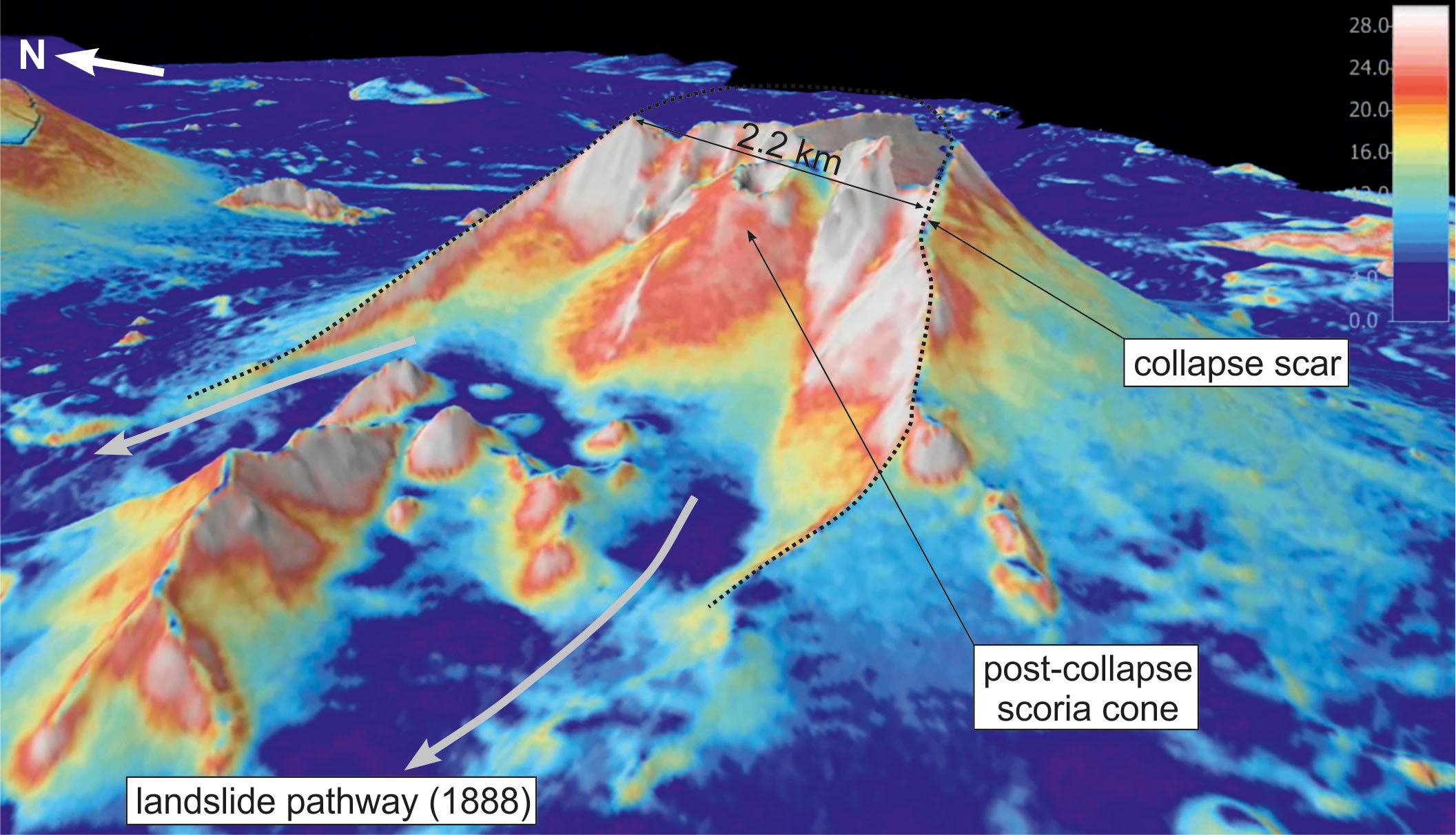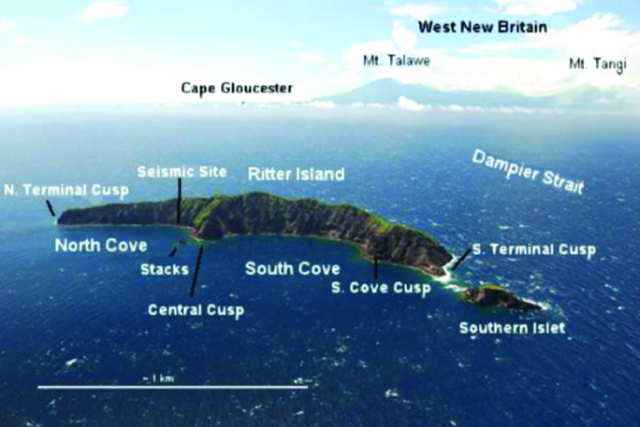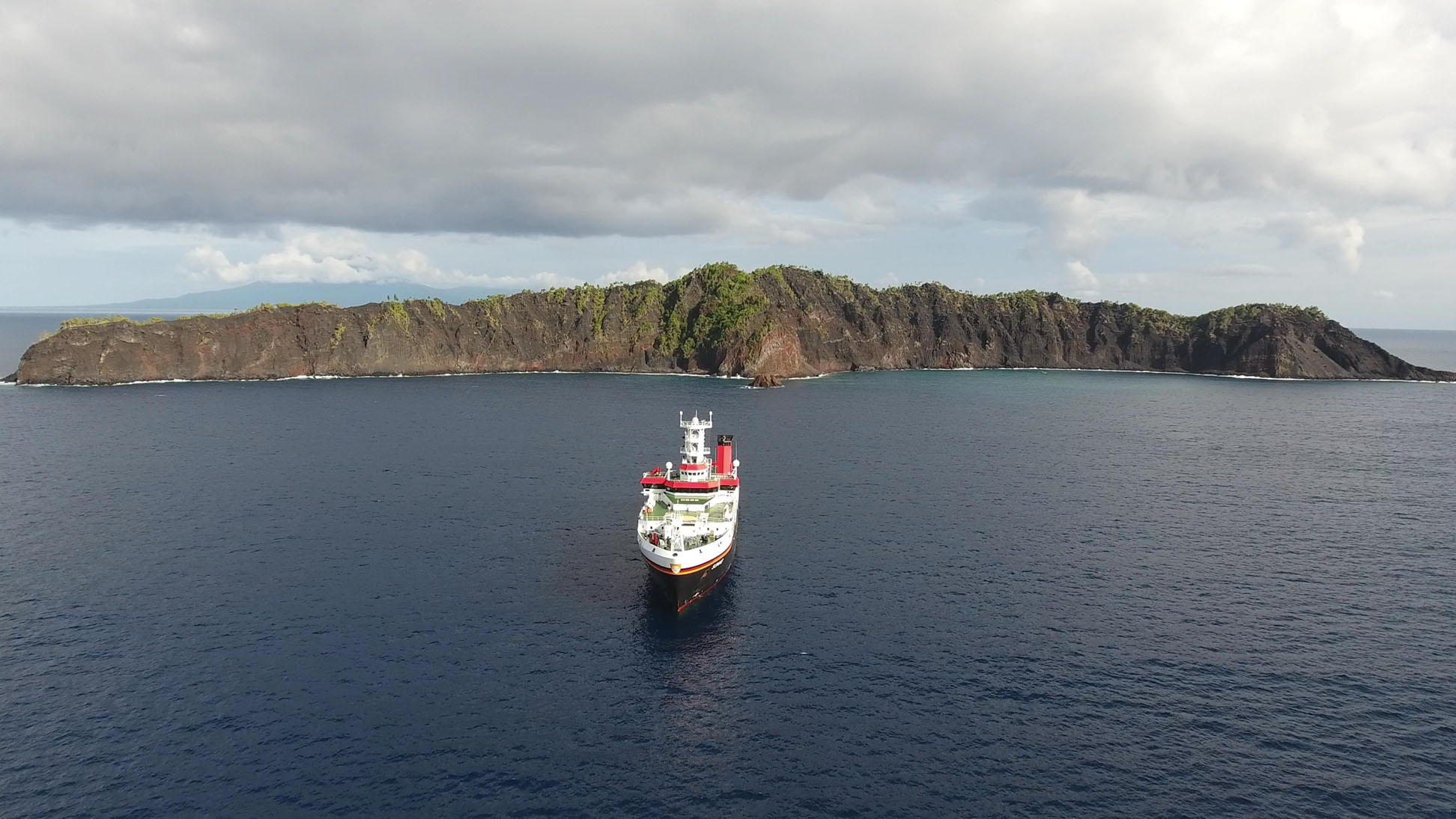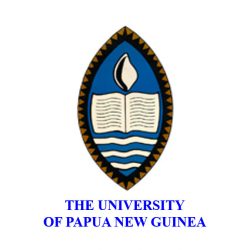The 1888 Ritter Island (Papua New Guinea) landslide was the largest historical volcanic-island landslide ever recorded and generated a devastating regional tsunami. Dr. Sebastian Watt (University of Birmingham) and his international team of researchers are joining R/V Falkor to reconstruct in detail the dynamics of the Ritter landslide event while also documenting the re-establishment of benthic biota and early successional processes across a range of depths following this catastrophic seafloor disturbance. To improve the understanding of tsunami hazards from volcanic-island landslides, it is essential that landslide-tsunami models are testable against a detailed field data set. The Ritter landslide provides an outstanding example where a detailed understanding of the landslide can be combined with eyewitness tsunami observations to improve our understanding of these coupled processes. The project will use ROV SuBastian equipped with a sediment corer and microscope to produce a comprehensive reconstruction of landslide deposition, which will ultimately be used to test the success of numerical models in representing the Ritter Island event.
The Missing Link
Volcanic-island landslides represent some of the largest mass movements on Earth, capable of transporting and depositing an enormous amount of material on the seafloor. Mapping the deposits gives scientists a simplified picture of the event, providing information on the extent and volume of the mobilised material. However, these deposits are a mixture of the initial landslide mass and seafloor sediment eroded by the landslide as it moved across the seafloor. The event may also have been associated with an explosive volcanic eruption, further complicating the depositional record. To reconstruct the magnitude and mechanisms of the slide, the science team will build upon previous mapping efforts with detailed surveys and sampling. ROV SuBastian will be equipped with a novel microscope developed by the University of Haifa as well as a shallow coring system to survey and sample the landslide deposits and surrounding area. The new ROV imaging will provide important information on the deposit origin, sedimentology, and erosional processes as well as help guide strategic coring. By taking careful sediment cores, the preserved sediment layers from in and around the deposit will be used to piece together the landslide processes. The ROV microscope will also enable novel in-situ observations of marine biota, which have colonised the rocky substrates transported into deep water by the landslide event. Characterization of the Ritter Island event from initial failure through to the final deposit, combined with existing tsunami observations, will create a dataset that will help interpret other landslide deposits around volcanic islands worldwide.
Putting Models to the Test
The Ritter Island collapse triggered a tsunami that devastated coastal communities more than 500 km away. Historical records suggest that volcanic-island landslides of this size occur globally approximately every 100-200 years. The most recent event of this type was the lateral collapse of Anak Krakatau, Indonesia, in 2018, which generated a highly destructive tsunami. Current predictive models of these events are limited because there are no detailed records that combine both precise information on landslide processes and tsunami observations. Ritter Island represents one of the only events recent enough for tsunami observations to be available, and where the deposits can be sampled directly at the seafloor. The generated dataset will serve as the missing link to create a general model of coupled landslide-tsunami processes, which can be used to improve our understanding of hazard scenarios for these events. In addition to the geologic work, the team will survey the marine biological diversity of the region, adding significantly to our record of benthic biota in the region and specifically investigating how catastrophic events impact seafloor organisms.











